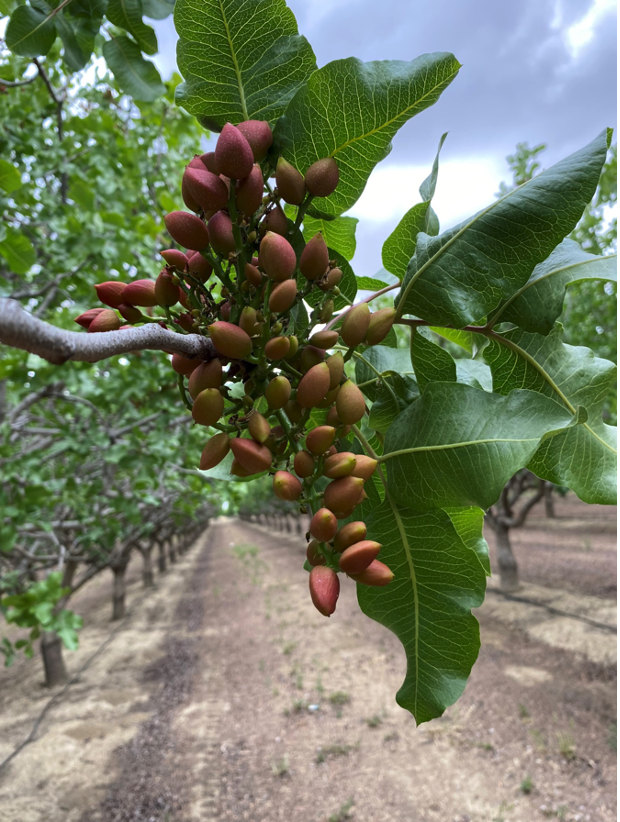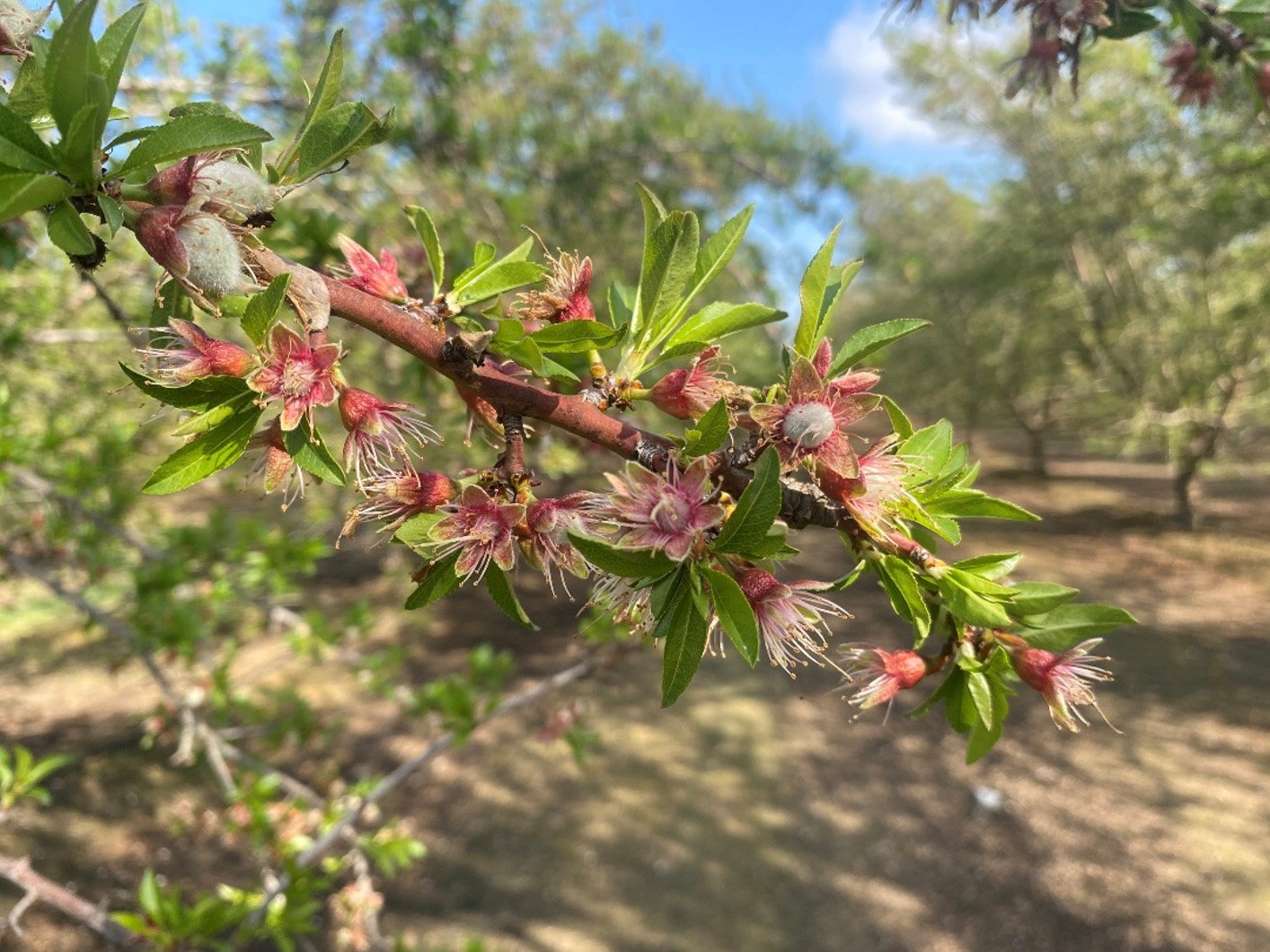By Travis Goldman, CCA, CAIS
The 2022/2023 winter has been a significant change of pace for all of us in California. Just last year I was writing rehydration irrigation recommendations and schedules for the month of January to combat dry soil profiles to prevent stress before vascular rehydration. This January I am faced with a couple questions and scenarios for spring management plans. In every plan we want to make room for crop protection, spraying and fertility. In February I want to maximize root respiration to mitigate disease pressure, prevent leaching of fertilizer and minimize compaction from spraying.
Scenario #1: Buds are swelling, and field is close to saturation. Some of the ends of the field still have standing water.
Scenario #2: Field has good surface moisture but no deep moisture.
Scenario #1
High soil tension stress after harvest was a common theme for most California almonds. Depending on your water situation I had some customers able to apply 2-3 shorter irrigations before irrigation water was no longer available. In the field below we recorded most of our rehydration within the first part of December followed by consistent rains from New Year’s that saturated the profiles. Since our last rain the soils have had some time to breathe within the top 24” but our deep moisture is still saturated. In some of the swales and ends there is excessive moisture. Most of the ponding seen on January 18th has been evaporated off but oxygen within these saturated soils is still limited.

Moving into bud swell I would highly focus on root respiration. The main reason why we irrigate is to replenish a soil moisture deficit. In this case our limited resource is not water but rather oxygen. This ranch has a history with frost and I would advise on allowing the trees absorb what moisture is available with the goal of getting soil tension levels above 25 kPa. Ends and swales that tend to collet water will also see some relief. When frost water is needed we still have a bit of a reservoir within our soils to catch this moisture. Preventing habitual saturation and anaerobic soil conditions will also help with orchard uniformity as well as it being less of mess to spray with ground rigs.
February Irrigation Tips
- Irrigate to the holding capacity of your field.
- Mitigate leaching fractions and standing water. No 24 hour sets.
- Optimize oxygen and root respiration.
- Oxygen can be the limiting resource for your trees.
- Address standing water issues. Can you use a small trash pump to remove water?
- Fix damaged hoses. 8 hours of water from a blown out size 700 hose can flood quite a bit.
- Quantify soil tension stress.
- Look at the entire soil profile.
- Allow the top 12” to dry up to at least 30 kPa before running water.
- Mitigate compaction
- Prioritize dry topsoil fields for ground rigs.
- Fields that are too saturated for ground rigs should be sprayed by air.
- Compaction this spring will cause significant issues the rest of this season.
Scenario #2
2022’s growing season was a challenge for most almond growers especially in regions with limited or no surface water. Some customers on the west side did not see nearly as much precipitation as most of the central and eastern part of the state with the Diablo Mountain Grade absorbing most of these storms. This January some fields recorded zero leaching fractions which means residual salts from 2022 are on the leading edge of this winter’s precipitation stopping point.

The field above saw only two 24 hour applications in the month of November before water was pulled by the district. Since then, most rain events have taken care of the top 12-18” of the soil but a limited number of events have contributed to the 24” soil horizon. Nearing bloom, these trees will require more water to maximize root hair surface area. Winter sanitation is almost wrapped up but water will be off until the 1st of February for district maintenance. For the time being I would plan on running shorter 8-10 hour irrigations until after the 1st bloom spray to manage water close to the drip hoses and prevent water from running into the centers. This region is notorious for being cold and several nights of frost protection water could lead to a full rehydration of the profile. If frost water is not needed then I would like to run two 24 hour irrigation events to flush the soil profile before any nitrogen based fertilizers are injected.
February Irrigation Tips
- Precision irrigation
- Regulate off-site water movement.
- Irrigate to what the field will hold.
- Cut excessive water applications.
- Optimize oxygen and root respiration
- Mitigate standing water. Standing surface water will seal off oxygen.
- Hydrophobic soils can reject water due to soil imbalances.
- Apply flowable soil amendments and water penetration products where soils need it.
- Do not apply nitrogen based fertilizers in wet and saturated fields.
- Mitigate compaction
- Allow troubling fields time to dry up before sending in ground rigs.
- Prioritize dryer field with ground rigs.
- Hold off on longer irrigations until ground crews are done.
- Frost Protection
- Frost water applications will likely refill this soil and potentially add leaching fractions.
- Wait to run nitrogen based fertilizers till needed. Frost water could leach materials.







